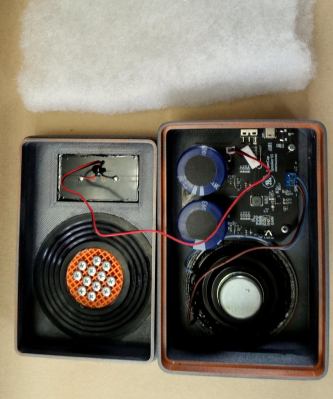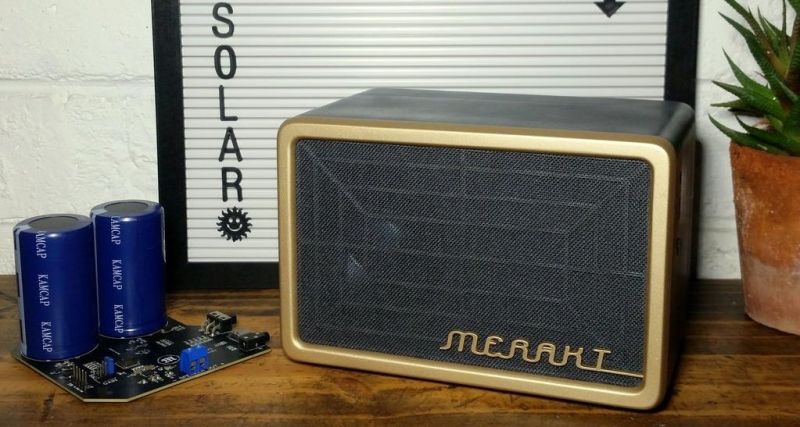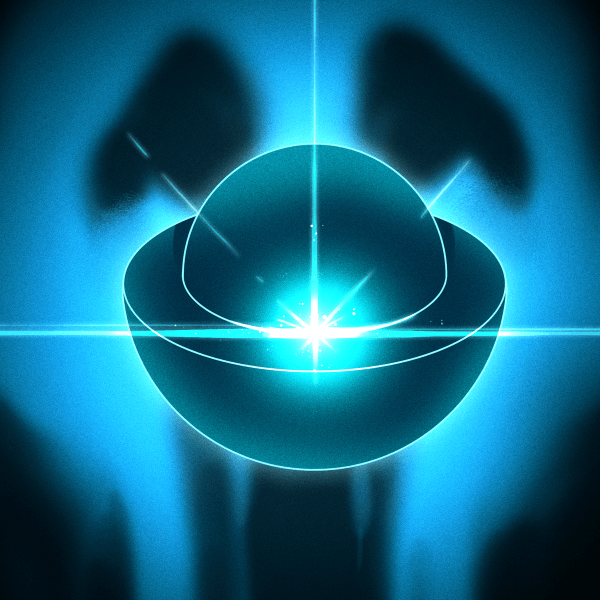Inspired by many months of hours-long load shedding in South Africa, [JGJMatt] decided to make a portable speaker that can play tunes for hours on a single charge and even charge off the integrated solar panel to top the charge off. None of this should sound too surprising, but what differentiates this speaker is the use of two beefy 400 F, 2.7 V supercapacitors in series rather than a lithium-ion battery on the custom PCB with the Ti TPA2013D1 Class-D mono amplifier.

The reason for supercapacitors is two-fold. The first is that their lifespan is much longer than that of Li-ion batteries, the second that they can charge much faster. The disadvantages of supercapacitors come in the form of their lower energy density and linear discharge voltage. For the latter issue the TPA2301D1 amplifier has a built-in boost converter for an input range from 1.8 – 5.5 V, and despite the lower energy density a solid 6 hours of playback are claimed.
Beyond the exquisitely finished 3D printed PETG shell and TPU-based passive bass radiator, the functionality consists out of a single full-range speaker and an analog audio input (TRS jack and USB-C). To add Bluetooth support [JGJMatt] created a module consisting out of a Bluetooth module that connects to the USB-C port for both power and analog audio input.
Charging the speaker can be done via the USB-C port, as well as via the solar panel. This means that you can plug its USB-C port into e.g. a laptop’s USB-C port and (hopefully) charge it and play back music at the same time.
For those feeling like replicating this feat, the Gerbers, bill of materials, enclosure STLs, and everything else needed can be be found in the tutorial.

















I hate batteries. This is amazing! I love living in the future.
You’re living in July of this year:
https://hackaday.com/2023/07/08/hackaday-prize-2023-supercapacitors-let-solar-speaker-work-in-darkness/
Oh dear! Sorry about that.
The deja vu is strong here
https://hackaday.com/2023/07/08/hackaday-prize-2023-supercapacitors-let-solar-speaker-work-in-darkness/
Maybe someone can answer this, but in school we are tought that putting capacitors in series decreases it’s capacity. Why are they put in series here?
To increase voltage.
Its not something bad, just a design decision.
Putting capacitors in series reduces the capaciTANCE. It has no effect on the capaciTY (i.e., the amount of energy stored).
The esp32 audio kit is ~$15 shipped and can do bluetooth audio or work as a multi-room setup controlled by HA. It can do stereo if needed and uses such a small amount of juice that mine all run off scavenged vape batteries. I get about 12hrs per charge, but the outdoor speakers have crappy little solar panels that keep them topped up.
Interesting. The stored energy is 1/2 * C * U^2. Assuming the voltage range of 1.8V to 5.5V and 400F capacity, this is around 5400Ws. With 6h playback time there is a power budget of 0.25W on average. With a class D amplifier, this is sufficient if you listen at a moderate volume, I guess, but you probably cannot do anything on top of it like WiFi streaming or so (for reference: an ESP32 draws like 0.5W with active WiFi alone). Or you at least have to add a bunch more of these supercaps :-)
Still, I built an MP3 player with amplifier with a LiOn battery based on an ESP32 (was even presented here a while ago: https://github.com/mhier/LauraBox/), and this battery lasts with typical usage for a month or two. This is rare enough to basically forget about it most of the time :-)
The capacitors are in series, so the capacity isn’t 400F. The total energy is about half what you have there. Specifically, in the link it says it’s charging to 5.4V since they’re 2.7V caps. That leaves about 2600Ws of energy in the caps and naturally less available for the speaker, so I’d suggest it really needs a very efficient speaker and bluetooth may be tough.
That is very cool. Sadly I’m a very poor copycat
when comparing energy storage, the configuration (series or parallel) doesn’t affect the total energy as long as the individual capacitances and voltage are the same.